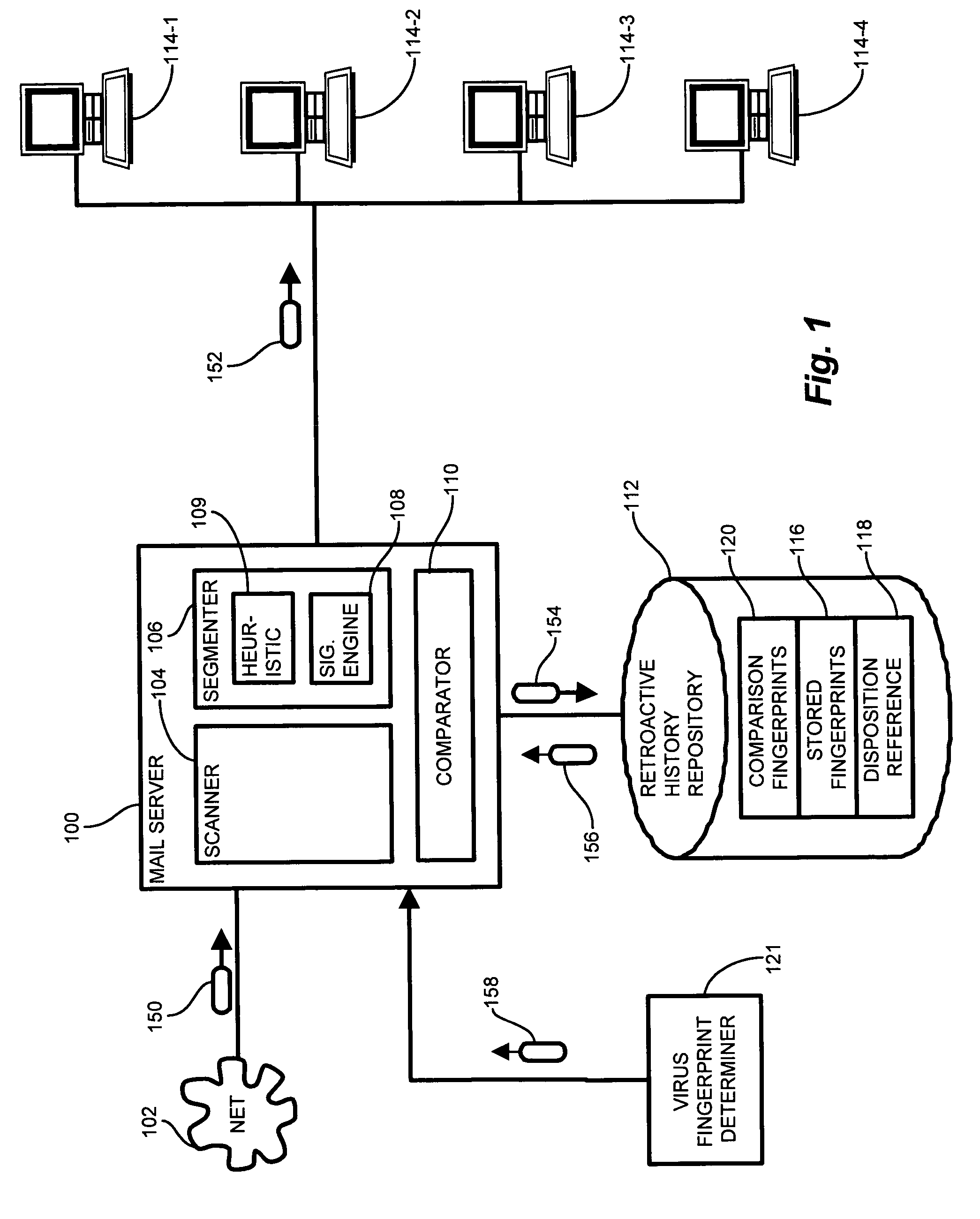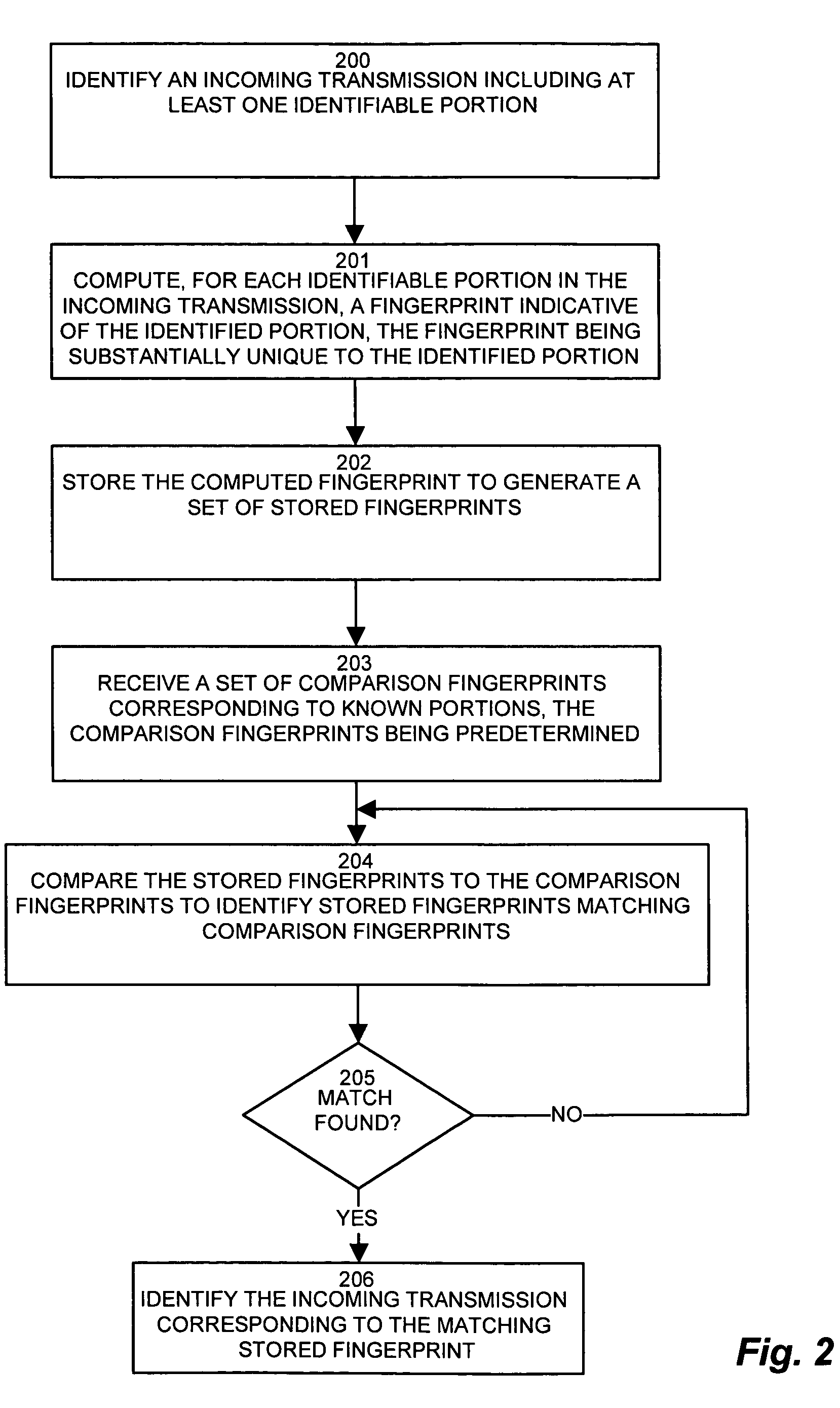System and method for identifying message propagation
a message propagation and message technology, applied in the field of system and method for identifying message propagation, can solve the problems of infiltrating the user computer system, inability to identify the message propagation,
- Summary
- Abstract
- Description
- Claims
- Application Information
AI Technical Summary
Benefits of technology
Problems solved by technology
Method used
Image
Examples
Embodiment Construction
[0019]Conventional virus detection applications employ a set of known virus fingerprints for comparison with fingerprints of incoming mail messages suspected of potentially carrying a virus. The fingerprint set contains a fingerprint for each known virus which the application is to protect against, and the application compares each fingerprint in the set to the fingerprint of suspect message portions. Typically, vendors of such applications provide periodic updates including additions to the fingerprint set of known viruses. These additions result from detection of new viruses, and decomposition of the new viruses to compute an appropriate fingerprint for use by the virus detection application. However, the new viruses may enjoy a period of largely unrestricted propagation pending detection and fingerprint generation, by the vendor, for combating the virus. During this lag time between virus inception and incorporation into the virus detection application, the virus may propagate am...
PUM
 Login to View More
Login to View More Abstract
Description
Claims
Application Information
 Login to View More
Login to View More - R&D
- Intellectual Property
- Life Sciences
- Materials
- Tech Scout
- Unparalleled Data Quality
- Higher Quality Content
- 60% Fewer Hallucinations
Browse by: Latest US Patents, China's latest patents, Technical Efficacy Thesaurus, Application Domain, Technology Topic, Popular Technical Reports.
© 2025 PatSnap. All rights reserved.Legal|Privacy policy|Modern Slavery Act Transparency Statement|Sitemap|About US| Contact US: help@patsnap.com



